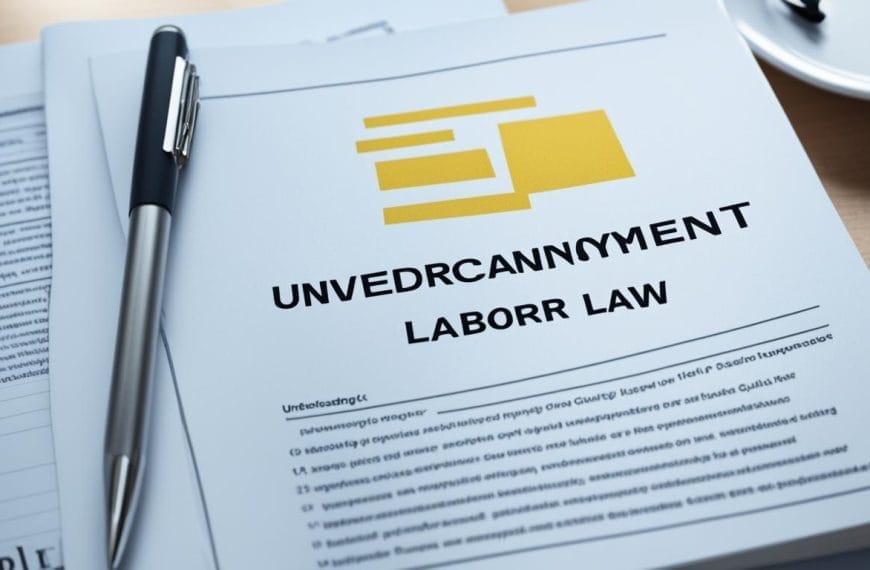Key Takeaways
- EEO ensures fairness and non-discrimination for all in the workplace.
- It promotes equal access to job opportunities, benefits, and treatment.
- EEO prohibits discrimination based on protected characteristics.
- Employers must follow EEO laws and regulations to create a diverse and inclusive work environment.
Equal Access to Job Opportunities: A Level Playing Field for All
Equal Employment Opportunity (EEO) starts with ensuring everyone has a fair chance to apply and be considered for jobs, regardless of their background. This means focusing on an applicant’s qualifications and skills during the hiring process, rather than personal characteristics like race, religion, or gender.
The Equal Employment Opportunity Commission (EEOC) enforces this principle, ensuring employers adhere to EEO guidelines and prevent discrimination in hiring practices. This creates a diverse workforce where talent and merit are valued, giving everyone a chance to succeed.
Prohibited Discrimination in Hiring
EEO laws protect individuals from discrimination based on various characteristics:
- Race: Rejecting candidates because of their race is illegal and unethical.
- Religion: Employers cannot refuse to hire someone based on their religious beliefs.
- Sex: Gender should not be a factor in selecting candidates.
- Disability: Individuals with disabilities deserve equal access to job opportunities.
- Age: Qualified candidates should not be overlooked due to their age.
- National Origin: Discrimination based on an individual’s country of origin is strictly prohibited.
Equal Treatment and Benefits: Fairness for All Employees
EEO principles extend beyond hiring to ensure fair treatment and equal benefits for all employees throughout their employment. This includes:
- Compensation: Fair and unbiased evaluation of employee performance for salary and benefits.
- Training and Development: Consistent access to opportunities for professional growth and skill enhancement.
- Workplace Benefits: Providing equal access to benefits, like health insurance and paid time off, without discrimination.
By maintaining consistent policies and practices, employers create a fair and inclusive work environment where everyone feels valued and has the opportunity to thrive.
Non-Discrimination and Consistency: Upholding Fairness
Non-discrimination and consistency are cornerstones of EEO. Employers must apply policies and practices consistently without bias or favoritism based on protected characteristics. This applies to all aspects of employment, including:
- Hiring and Recruitment
- Promotions and Career Advancement
- Training and Development Opportunities
- Disciplinary Actions
By eliminating discriminatory practices and ensuring fairness, organizations foster a positive work environment where individuals are judged solely on their merits and contributions.
Prohibition of Employment Discrimination: Protecting Employee Rights
EEO laws strictly prohibit employment discrimination based on protected characteristics. This means employers cannot make decisions about hiring, firing, promotions, or compensation based on an individual’s:
- Race
- Color
- Religion
- Sex
- Disability
- Age
- National Origin
The EEOC investigates and addresses claims of employment discrimination to ensure employees’ rights are protected and workplaces remain free from unfair practices.
Laws and Policies Supporting EEO: A Framework for Equality
Several laws and policies support EEO principles and provide guidance for employers and employees:
- Title VII of the Civil Rights Act of 1964: This landmark legislation prohibits discrimination based on race, color, religion, sex, and national origin.
- Americans with Disabilities Act (ADA): The ADA protects individuals with disabilities from discrimination in employment, ensuring equal access to job opportunities and reasonable accommodations.
- Age Discrimination in Employment Act: This act prohibits age discrimination against individuals who are 40 years of age or older, promoting equal opportunities for experienced workers.
- Equal Pay Act: This act mandates equal pay for equal work, regardless of gender, ensuring fair compensation for all employees.
These laws, along with numerous federal and state regulations, provide a framework for employers to establish fair practices and ensure equal opportunities for all.
Enforcement of EEOC Regulations: Ensuring Accountability
The EEOC plays a crucial role in enforcing EEO regulations and addressing discrimination complaints. They investigate charges by:
- Gathering evidence: Collecting relevant documents and interviewing individuals involved.
- Mediation and Settlement: Attempting to resolve complaints through amicable agreements.
- Legal Action: Filing lawsuits against employers when necessary to protect employee rights and uphold EEO principles.
By holding employers accountable, the EEOC helps maintain fair and inclusive workplaces that value diversity and provide equal opportunities for all.
Conclusion: Building a Better Workplace Together
Equal Employment Opportunity is essential for creating a fair and just society. By understanding and upholding the four key concepts of EEO, employers can build diverse and inclusive workplaces where everyone has the opportunity to succeed. This requires a commitment to eliminating discrimination, promoting equal access to opportunities, and ensuring fair treatment for all employees. By working together, we can create workplaces where individual merit and contribution are valued above all else, fostering a more equitable and prosperous future for everyone.













